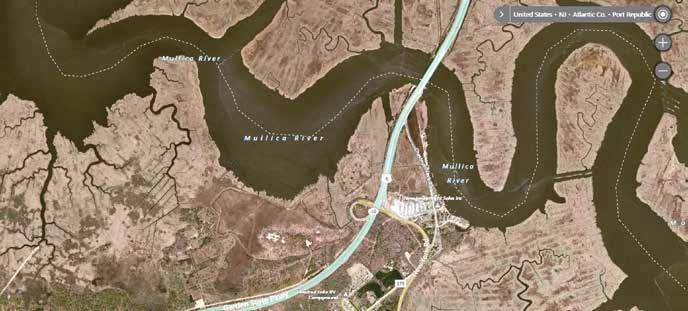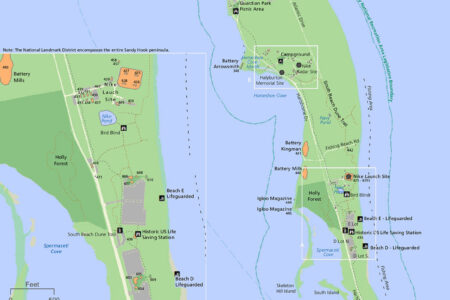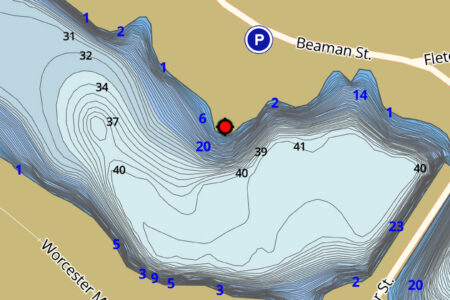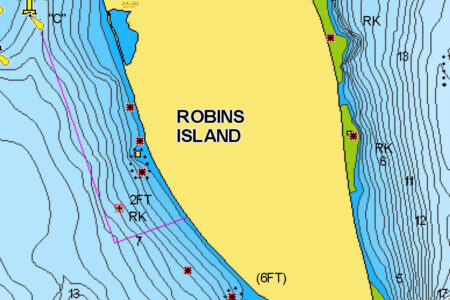
Rolling the dice on ice is chancy for sure when contemplating hardwater ventures in South Jersey; doubly so if said swim is influenced by the lunar-driven rise and fall of the tidewaters below the Trenton-to-Point Pleasant demarcation. Ninety-nine times out of a hundred, that’s the Mullica River, or more specifically Collins Cove.
In its heyday when safe ice was prevalent from mid-January through February, any given weekend day saw well over 100 anglers standing over holes, rods in hand, while watching for the sudden dip of a rod tip, with white perch scattered about on the ice and filling buckets to the brim.
While through-the-hole angling opportunities of any significant duration have grown rather uncommon throughout the Garden State’s southern tier counties, there have been times from late January into the second or third week in February when week-long teens and single-digit freezes of a week or so have locked ponds, lakes and “criks,” tidal or otherwise, under sheaths ranging to 5 inches, sometimes more. When this happens, it triggers a migration of auger and spud-armed, action-starved anglers who appreciate the hardwater novelty and luscious repast of deep fried, panko-coated whitey fillets.
Collins Cove is located within eyesight of the southbound Garden State Parkway in Atlantic County just before Exit 48 at approximately the two o’clock position as you’re atop the span. Alleged to have boasted depths as much as 50 feet way back when, the inevitable filling with sediment over time now gives it have an estimated maximum reach of approximately 18 feet, although some river regulars claim to know of intermittent holes stretching to 23 feet. The substratum is primarily muck with patches of sand and the occasional shell bed.
The depth from the bank out to about 100 to 120 yards averages a scant 1 to 3 feet; it’s beyond this where the bottom begins sloping to deeper perch-perusing areas. According to a recent nautical chart, the most productive area encompasses about a 25-percent section of the cove, but there are times when those dropping baits off the “grid” also hoist perch. No freshwater license is required, but you need your saltwater registry handy.
The local theory as to why Collins Cove plays host to roving pods and schools of white perch is that the fish seek respite from the winter currents of the river proper and also good forage in the form of grass shrimp and minnies (killies). As with most schooling species, the perch will be similar in size from one group to another, with lengths from 5 inches to horses of a foot or more at one time or another. Generally, the bigger the perch, the fewer members are in the bunch.
The common phrase around these parts is “If you don’t have grass shrimp, stay home.” This is basically true when it comes to numbers, but for heftier whiteys, killies are the key. This was learned back in the earlier part of the century when a brutal, long lasting freeze cloaked most of the cove in a 6-inch frozen mantle. Our group was having a grand time pulling up singles, doubles and even the occasional triple, mostly in the 7- to 9-inch range with a few topping 10 inches. On his way off the ice, a tacit Kurt Rott from Absecon Bay Sportsman Center showed us a bucket jammed with perch from 10 to almost 14 inches. “Minnies,” was all he said.
A hi-low rig with two to three hooks is the standard, with whatever light or medium action 5- to 6-foot rod happens to be handy. Lines are generally 8- to 12-pound test mono, with some choosing 20- to 40-pound braid. A 1- or 2-ounce bank sinker is generally enough ballast. Some jig small spoons such as the 1/8-ounce gold or silver Swedish Pimple or Kastmaster, or a W2 or W3 Rapala Jigging Rap sweetened with a grass shrimp or two on the front and/or rear hooks.
Collins Cove is best accessed from Clarks Landing Road or Cologne Port Republic Road, turning up Sooys Landing Road; you’ll then take an immediate right onto a sand and dirt road (four-wheel drive is preferable) running parallel to the GSP. A parking area is about a mile down and the trails through the phragmites leading to the cove will be evident.




